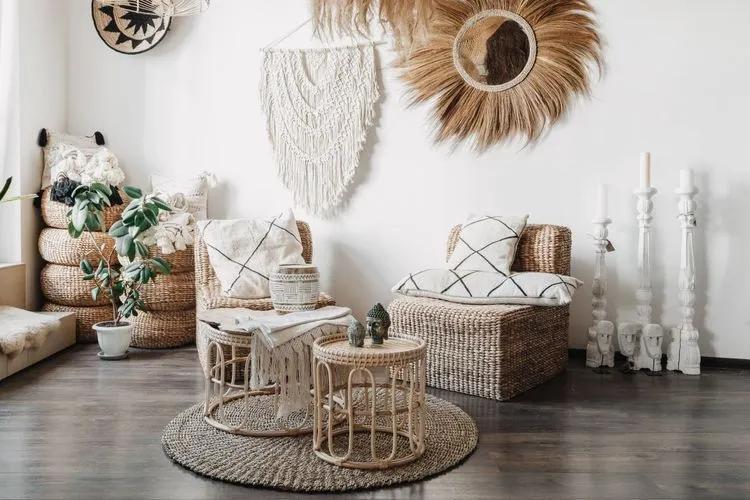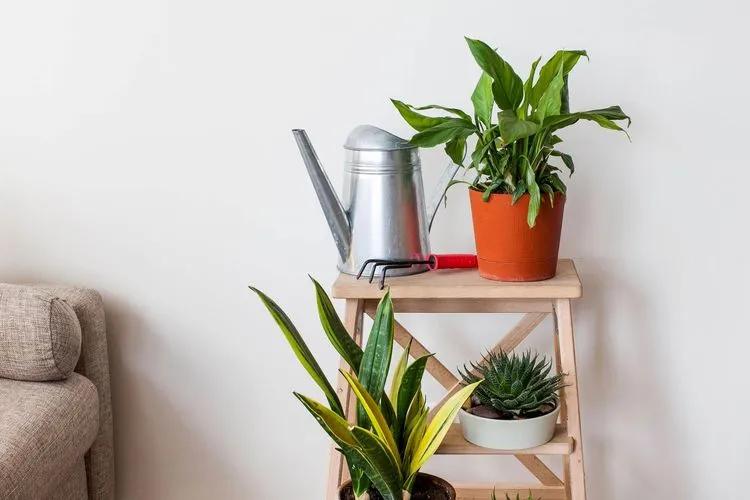Since ancient times in the Chinese Empire, the Feng Shui technique was used to bring positive vibrations to where you are – and certain types of houseplants suit this intention perfectly. In this article, you will learn what feng shui is as well as the best feng shui plants, and which feng shui plants to choose for wealth and harmony. We will also help you create a feng shui bedroom and advise how to arrange plants in the living room and outside the house. Be sure to read the article to the end to learn the secrets of harmony in everything!
What Is Feng Shui?

Feng Shui is an ancient Chinese philosophy based on visible and invisible worlds. In simple terms, the goal of Feng-Shui is to bring positive vibrations, harmony, and luck to a human. According to this philosophical system, balance in the house, objects used for decoration, the direction of their location, their color, etc., influence you and the other people who live in these conditions dramatically. Oddly enough, a plant can also affect your well-being, mood, and luck!
The Origins of Feng Shui
Feng shui has been practiced in China for about 4,000 years; that is, the beginning of feng shui refers almost to the front of Chinese civilization! According to historical data, this technique was practiced in the Tang Dynasty, where the Feng Shui masters chose a good place for the palace. Yang Yun Sang was the most famous master of Feng Shui, who emphasized choosing a safe place for home. This place was supposed to have dragon energy, so by this point, the choice was made very carefully. Then, the philosophy was brought further to include not only the location of the house overall but the location of the items inside and many other aspects.
How Do You Choose Color and Pot Shape for Each Element?
The shape and color of planters are of great importance in Feng Shui lucky plants! The pot and color are believed to be significant to plant growth and enhance positive vibrations in the house. It is necessary to place plants in pots that match the elements of the flower. For example, if you put a plant of Elements of Water in the pot of Fire form, your flower is likely not to live long. The distribution of plants in the room should occur in an area corresponding to plant elements, such as fire, earth, wood, metal, and water.
For the ideal feng shui plant, we advise you to follow the following rules:
Rule 1: Elements

Fire
Most flowering red plants are considered fire.
Earth
Element of the earth includes yellow flowering indoor plants and plants with thick leaves or stems.
Wood
Besides all the trees, succulent plants, foliage plants that do not bloom, and ones that have large flowers are wood.
Metal
Room plants with white flowers are believed to belong to the metal element.
Water
Plants with blue or purple flowers and curly plants are parts of the element of water.
Rule 2: Pots and Their Shapes
- Triangular-shaped red or purple pots are suitable for Fire plants.
- Plants that belong to the Earth will feel great in orange or yellow cube-shaped pots.
- For Wood, choose cylindrical planters in green or turquoise.
- For Metal, the best match is a round or ball-shaped pot. Oddly enough, the pot should be metal, silver, or gold.
- For Water, the planter must have wavy or soft edges and be colored in white, black, or blue.
- If you put the Water plants in a big red pot, they could die because the red color of the Fire would contradict the element of the plant. You can’t mix a blue pot with a triangle. The plants in this pot will also be between two contradictory elements.
How to Arrange Green Feng Shui?

So how to arrange indoor plants to help attract abundance and positive energy to your home? Take notes:
- Put plants on the window sill to filter the negative energy from the outside.
- Get a plant that stretches upwards: it will activate your life force.
- In the bedroom, the plants should be kept away from the bed, as it is believed that the energy of Yan saturates them, which will affect the relationship between the spouses.
- For the kitchen, choose a fruit-bearing plant with light shades of twigs and round leaves.
- As for the children's room, consider placing Chlorophytum, Fern, Citrus tree, or Chinese rose there.
- Don’t keep artificial and dry dead plants in the house because they absorb your energy.
- In landscape design, each tree and plant must be balanced by five Feng Shui elements. Always take care of land and housing; otherwise, the quality of life is reduced, and positive energy flow is disrupted.
How Do You Put the Plants in the House in the Feng Shui Scheme?
Each side of the world will correspond to a particular element that we have listed before. For example, the fire sign is south; the ground is south-west, the wood is south-east, the metal is north-west, and the symbol of water is north.
Southside
South – Fire. Geranium, Rosoideae (roses), Gerbera, Impatiens, Nerium oleander are well settled here. It’s a perfect place to grow Physalis, tiny roses, Guzmania lingulata, Begonia, and Rhododendron.
South-West – Earth. This side is perfect for plants that belong to the Earth’s element. These are almost all indoor plants that have yellow flowers, such as Hydrangea, small-flowered Chrysanthemum, Rosa, Aster, Orchid.
South-East – Wood. Saintpaulia, Begonia, Kalanchoe laciniata, Cyclamen, Citrus, as well as all thick-leaved plants, will feel great on this side, according to feng shui.
Northside
North-West – Metal. According to ancient philosophy, Aloe and Chlorophytum will be well settled if the windows are facing this side.
North – Water. Place Dracaena, Asparagus, Grevillea, and Aspidistra, Asplenium scolopendrium, Chlorophytum comosum, Epipremnum Here. And a little tip: all the plants belonging to the element of Water prefer shaded windows.
Eastside
To maintain the health of all the family, we advise you to pay attention to Dracaena, Ficus, Philodendron, Yucca, and Bambusa.
Westside
Begonia, Beloperone, Ficus, Gardenia, and other shade-loving plants will suit the best on this side of the house. Also, consider white geraniums or silver or gold licorice.
FAQ
Which Houseplants Are Best Suited for Feng Shui Purposes?
For good Feng Shui, pick plants that bring calm and positive energy. The Money Tree and Jade Plant are said to attract wealth, while Lucky Bamboo symbolizes harmony. Peace Lilies and Snake Plants help purify the air. In general, plants with soft, rounded leaves are thought to invite good luck.
